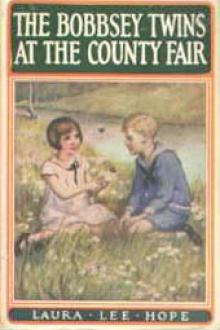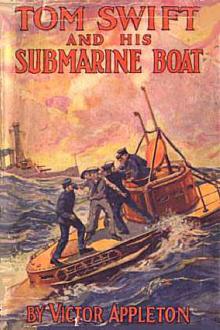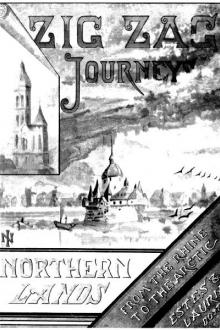Northumberland Yesterday And To Day, Jean F. Terry [learn to read activity book .txt] 📗

- Author: Jean F. Terry
Book online «Northumberland Yesterday And To Day, Jean F. Terry [learn to read activity book .txt] 📗». Author Jean F. Terry
Of That Stream Which, Deep, Dark, And Swift At Its Mouth, Bears The
Mighty Battleships There Built To Carry The War-Flags Of The Nations
Round The World. In The Wild And Lovely District Where The North Tyne
Takes Its Rise, Is Kielder Castle, A Shooting Box Belonging To The Duke
Of Northumberland.
This Neighbourhood Is The Scene Of Two Romantic Ballads; That Of The
"Cowt (Colt) Of Kielder" And The Ettrick Shepherd's Ballad Of "Sir David
Graeme." The Deadly Enemy Of The Young "Cowt," So Called From His Great
Strength, Is Lord Soulis Of Hermitage Castle, On The Scottish Side Of
The Border. The Cowt, With His Followers, Was Enticed Into The Castle,
Where Lord Soulis Purposed His Death; But The Gigantic Youth Burst
Through The Circle Of His Foes And Escaped. The Evil Brownie Of The
Moorland, However, Gave To Lord Soulis The Secret Which Safeguarded The
Young Cowt. His Coat Of Mail Was Sword-Proof By A Spell Of Enchantment,
And He Wore In His Helmet Rowan And Holly Leaves; But These Would All Be
Of No Avail Against The Power Of Running Water. The Cowt Was Pursued
Until, In Crossing A Burn, He Stumbled And Lost His Helmet, And Ere He
Recovered, His Enemies Were Upon Him, And They Held Him Under Water
Until He Was Drowned.
Not Far From The Mouth Of The Bell Burn, Which Here Runs Into The Tyne,
A Circle Of Stones Outside An Ancient Burial Ground Is Known As The
Cowt's Grave.
"This Is The Bonny Brae, The Green,
Yet Sacred To The Brave,
Where Still, Of Ancient Size, Is Seen
Gigantic Kieldar's Grave.
* * * * *
Where Weeps The Birch With Branches Green
Without The Holy Ground,
Between Two Old Grey Stones Is Seen
The Warrior's Ridgey Mound.
And The Hunters Bold Of Kieldar's Train,
Within Yon Castle's Wall,
In A Deadly Sleep Must Aye Remain
Till The Ruined Towers Down Fall."
In The Ballad Of "Sir David Graeme," By James Hogg, The Lady Of The
Story Watched Out Of Her Window In Vain For The Coming Of Her "Noble
Graeme," Who Had Vowed That The Hate Of Her Father And Brothers Would
Not Keep Him From Coming To Carry Off His Fair Lady On St. Lambert's
Night.
"The Sun Had Drunk Frae Kieldar Fell
His Beverage O' The Morning Dew;
The Deer Had Crouched Her In The Dell,
The Heather Oped Its Bells O' Blue.
* * * * *
The Lady To Her Window Hied,
And It Opened O'er The Banks O' Tyne;
An' "O! Alack," She Said, And Sighed,
"Sure Ilka Breast Is Blythe But Mine?"
Her Forebodings Prove Only Too True, For Her Lover's Faithful Hound
Seeks Her Out, And With Mournful Looks Induces Her To Follow Him Over
Deadwater Fell, And Guides Her To A Lonely Spot Where The Body Of The
Gallant Graeme, Slain By Her Brothers, Is Lying.
In The Neighbourhood Of These Desolate Fells Are To Be Found Many Traces
Of Ancient British Camps.
The Little Mountain Streams Which Here Help To Swell The Stream Of The
North Tyne Are, On The South Side, The Lewis And Whickhope Burns, And On
The North, The Plashetts And Hawkhope Burns. On Both Sides Of The Tyne,
Near The Whickhope And The Hawkhope Burns Are Many Remains Of An Ancient
Pre-Historic Forest, The Largest Being Near The Whickhope Burn Where The
Abnormally Thick Stems Of Trees May Be Seen.
The Little Village Of Falstone Is Set Amongst Trees, In The Midst Of
Pleasant Meadows, A Welcome Relief From The Bare Fells And Moorlands
Around It; Yet This Wild Scenery Has A Distinct Fascination Of Its Own,
And Adds Not A Little To The Charm Of The Varied Landscape Within The
Bounds Of Our Northern County. At Falstone A Fragment Of An Ancient
Cross Was Discovered, With An Inscription Carved Upon It--In Roman
Letters On One Side And In The Runes Of The Anglo-Saxons On The Other.
The Inscription States That A Certain Eamer Set Up The Cross In Memory
Of His Uncle Hroethbert, And Asks For Prayers For His Soul. The
Existence Of A Similarly Inscribed Cross Is Not Known, So That The
Society Of Antiquaries, In Whose Keeping This Cross Rests, Has In It
Probably A Unique Treasure.
The Tarset Burn, Upon Which Stands The Village Of Thorneyburn, Runs Into
The Tyne Not Far From Falstone, And Reminds Us Of The Old Border-Riding
Days, When The Rallying-Cry Of The Men Of The District In Many A Feud
With Neighbouring Clans Was--"Tarset And Tarret Burn, Hard And
Heather-Bred, Yet-Yet-Yet." Near The Spot Where The Tarset Burn Joins The
Tyne Is A Grassy Hill On Which Once Stood Tarset Castle, A Stronghold Of
That Red Comyn Whom Bruce Slew In The Little Chapel At Dumfries, And Of
Whose Death Bruce's Friend Kirkpatrick Said He Would "Mak' Siccar"!
The Village Of Charlton, On The North Bank Of The Tyne, And The Mansion
Of Hesleyside On The Other, Carry The Mind Back To The Old Reiving
Plundering Days, For It Was At Hesleyside That The Incident Of The
Ancient Spur Of The Charlton's Took Place, Doubtless Many A Time And
Oft, When The Good Lady Of Hesleyside Served Up The Spur At Dinner As A
Gentle Hint That The Larder Was Empty, And It Behoved Her Lord To Mount
And Away To Replenish The Same, Preferably With Stock From The Scottish
Side Of The Border, Or If Not, A Neighbour's Cattle Would Serve Equally
Well.
The Charltons, Robsons (Possibly The Lineal Descendants Of "Hroethbert"
Of The Ancient Cross) And Armstrongs, Held Almost Undisputed Sway Over
This Region, And The District Teems With Reminders Of Their Prowess And
Traditions Of Their Exploits. The Men Of Tynedale (The North Tyne) And
Redesdale Were Known As The Fiercest And Most Lawless In All That Wild
District. Redesdale Is A District Of Monotonous, Almost Dreary,
Moorlands, And Wild, Bare Fells, Where Sheep Graze On What Scanty
Provender The Bleak Hills Afford, Finding Better Fare, However, In The
Valleys Near The River Banks, Where The Pasture Is Fresh And Green.
Bellingham Is To-Day The Most Considerable Village Of The Neighbourhood;
It Stands Conveniently At The Foot Of The Hills Where The Little Belling
Burn, Or Hareshaw Burn, Joins The Main Stream. In Hareshaw Woods Is The
Beautiful Hareshaw Linn, Where The Stream Falls Down Through A Break In
The Sandstone Cliffs, And Forms A Picturesque Waterfall, Fringed With
Ferns And Trees And Cool Mosses. It Well Repays One For The Walk Of A
Mile Or So Through Tangled Underwoods By The Side Of The Burn.
Bellingham Gives Its Mime To The Family Of De Bellingham, Whose Chief
Seat, However, Is Now In Ireland And No Longer In The Little
North-Country Town.
The Massive Church Here, With Its Roof Of Stone, Bears Eloquent
Testimony To The Need For Fireproof Buildings In A Village So Near To
Scotland In The Days Of Border Warfare. Outside The Churchyard Wall Is
The Well Of St. Cuthbert, Or "Cuddy's Well," Which Was Greatly Venerated
In Early Days, And Many Stories Are Told Of The Miraculous Power Of Its
Waters. Inside The Churchyard A Grave Is Pointed Out As The Burial Place
Of The Robber Whose Tragic End Was Told By James Hogg In His Gruesome
Story Of "The Long Pack."
The Village Itself Is Plain And Bare, As Might Be Expected From A
Settlement Which Would Probably Find That Unattractiveness In Either
Wealth Or Appearance Was A Tolerable Safeguard.
Below Bellingham The North Tyne Is Joined By Its Longest And Most Noted
Tributary, The Rede Water, Which Also Rises In The Cheviots. Rising In
The Hills North Of Carter Fell, It Flows South-East, Through A Wild
Region, Passing, While Still High Up Amongst The Hills, The Little
Village Of Byrness, And The New Reservoir At Catcleugh, Where A Supply
Of Pure Water Is Stored For The Use Of The Dwellers In Distant
Newcastle. On Its Way To The Tyne, It Passes Many An Old Pele-Tower, And
The Roman Stations Of Bremenium (Rochester) And Habitancum, Near
Woodburn. The Ancient Roman Road Of Watling Street Crosses The Rede At
Woodburn, Leading From Habitancum To Bremenium.
Many Mountain Streams, Clear And Sparkling, Or Peaty And Brown, Join The
Rede Water On Its Way, Amongst Others The Little Otter Burn, By Whose
Banks Took Place That Stirring Episode In The Constant Quarrels Between
The Douglases And Percies Known As "Chevy Chase," From Which The Fierce
Battle-Cries Ring Down The Five Centuries That Have Passed Since That
Time, With Sounds That Echo Still.
The Pretty Village Of Redesmouth (Or Reedsmouth) Stands Where The Rede
Water Enters The North Tyne, And A Few Miles Further On The Rapid Little
Houxty Burn Pours Its Peaty Waters Into The Main Stream.
On The Right Bank Of The Tyne Stands Wark, Conveniently Placed At One Of
The Most Important Fords Of The Tyne In Former Days. Like Other Towns
And Villages So Placed On Different Streams Throughout The Country, The
Advantages Of Its Situation Have Evidently Been Appreciated By The
Successive Inhabitants Of The Land, For There Are Traces Of Its
Occupation By Celt, Roman, And Saxon; And, Later, The Town Was The Most
Considerable In Upper Tynedale. During The Time That This Part Of
England Was Ceded To The Scottish Kings, David And Alexander, It Was At
Wark That The Scottish Law Courts For Tynedale Held Their Sittings. The
Mound Called The Mote Hill, Near The River, Marks The Spot Where, In All
Probability, The Ancient Celtic Inhabitants Met Together To Administer
The Rude Justice Of Prehistoric Times, And To Make The Laws Of Their
Little Settlement, Which Grew To Much Greater Proportions In Later
Years. In Fact, It Is Supposed That The Kirkfield Marks The Site Of A
Church Which Stood In The Midst Of The Once Extensive Town.
A Little Way Up The Wark Burn, Above The Bridge, There May Be Seen Some
Upright Stems Of Sigillaria In The Exposed Face Of The Cliffs. On The
Opposite Side Of The River From Wark Is Chipchase Castle, One Of The
Finest Mansions In Northumberland, Standing In The Midst Of The
Beautifully Wooded And Picturesque Scenery Which, From This Point
Onwards Is Characteristic Of The North Tyne. Of The Former Village Of
Chipchase Scarcely A Trace Remains, Though Its Name, If Nothing Else,
Shows That Here Has Been A Village Or Small Town, Important Enough To
Have Its Well-Known, Market; For "Chip," Like The Various "Chippings"
Throughout England Is Derived From The Anglo-Saxon _Ciepan_--To Buy And
Sell, To Traffic. In The Reign Of Henry Ii., Chipchase Was The Property
Of The Umfravilles Of Prudhoe; But Later It Passed Into The Hands Of The
Well-Known Northumbrian Family Of Heron.
Not Far From Chipchase Castle Are The Famous Gunnerton Crags, Formed By
An Out-Crop Of The Great Whin Sill. These Lofty Cliffs Have Been The
Site Of A Considerable Settlement Of The Ancient British Tribes Who
Dwelt In The District In Such Numbers, As Is Evident From The Scores Of
Camps, Which May Be Traced All Over This Part Of Northumberland. The
Naturally Strong Position On The Gunnerton Crags, Would Be Certain To
Commend Itself To A People, The First Requisite Of Whose Dwelling Places
Was Strength And Consequent Safety.
At Barrasford The Making Of The Railway Cutting Led To The Opening Up Of
A Large Barrow, Or Burial Place, Of The Ancient Britons; And A Single
"Menhir," Supposed To Be The Solitary Survivor Of A Large Group Of These
Huge Stones, Stood Near The Village School Some Years Ago.
Passing Chollerton And Humshaugh, Embowered Amongst Spreading Trees, We
Arrive At Chollerford, The Prettiest Village Of North Tyne, Lying Near
The River Where It Was Crossed By The Roman Wall. From The Bridge Which
Spans The Tyne At Chollerford One Of The Finest Views Of The River, Both
Up And Down The Stream, Is To Be Seen; And To Watch The Swift Brown
Stream, After A Flood Or A Freshet, Foaming Through The Arches Is An
Exhilarating Sight. The Bridge Itself Is A Modern One, For We Know That
All The Bridges On The Tyne, Except That Of Corbridge, Were Swept Away
By The Great Flood Of 1771.
In 1394, That Prince Of Bridge-Builders, Bishop Walter De Skirlaw Of
Durham, Granted Thirteen Days' Indulgence To All Who Should Assist In
Rebuilding The Bridge At Chollerford; So That Already There Was One Here
Which Had Evidently Fallen Into Disrepair. Yet, In The Ballad Of "Jock
O' The Side," The Rescuers, With Jock In Their Midst, Reach Chollerford,
And, After Some Anxious Questioning Of An Old Man As To Whether The
"Water Will Ride," Are Compelled To Swim The Tyne In Flood, Which Their
Pursuers, Coming Up, Will Not Attempt To Do. Now Bishop Skirlaw's
Bridges Did Not Usually Disappear; Those Of Yarm, Shincliffe, And
Auckland Have Stood Until To-Day, With Occasional Repairs. Are We Then
Reluctantly To Question The Truth Of "Jock O' The Side"? Surely, If The
Choice Remain Of The Accuracy Of The





Comments (0)